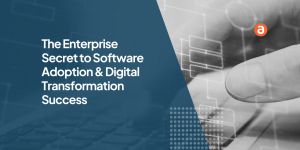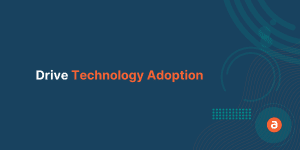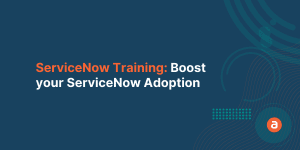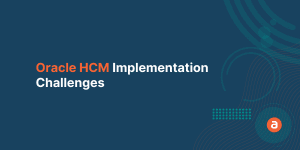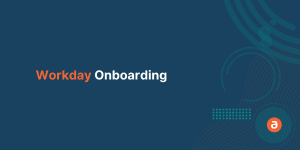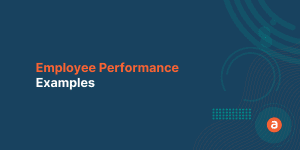A Great User Onboarding Experience can spell long-term success for your business. In the same breath, it is wise to also acknowledge that a shoddy one can put your business in jeopardy.
The User Onboarding experience is your users’ first encounter with your product. This is why it is absolutely crucial that your onboarding process is impeccable and impactful.
Onboarding users effectively also helps you quickly drive them to their aha moment which, as we all will agree, is the goal. It also helps you improve activation rates and ‘free-trial to paid customer’ conversion rate. And these are just the initial benefits of providing a solid user onboarding flow.
Research says companies with a great User Onboarding experience have 50% higher new-hire productivity. Providing a smooth User onboarding is not easy. Many SaaS companies face difficulties in providing a smooth User Onboarding experience.
In this blog, we are going to focus on the 10 best ways that you can provide a great first product experience to your end-users.
What is User Onboarding Experience or UX Onboarding?
User Onboarding experience or UX onboarding is the process of making end-users experience aha moment while making them understand your product.
Why User Onboarding Experience is important?
Imagine, you suddenly waking up in space station. How many of us can claim to be at complete ease trying to figure our way through it? Almost none!
Likewise, when people start using your product, they will not be aware of what they should be doing.
So, it is your responsibility to make them understand how to navigate your product and provide them with a smooth User Onboarding Experience.
The primary objective is to make your end-users understand how to use your product or application. This helps your users to:
- achieve their goals & objectives
- realize the ‘wow’ moment
- understand the value of your product
How to Create the Best User Onboarding Experience? What are the Tips to Follow?
Here’re the 10 tips to create smooth & effective User Onboarding Experience:
- Be simple and contextual
- Give a good head start
- Provide appealing Welcome messages
- Create value for your user
- Put your users in driver’s seat
- Use a Checklist or Progress bars
- Set Objectives and Target Metrics
- Focus on Individual Personas
- Provide Product Tour
- Be consistent and predictable
1. Be simple and contextual:
The mantra in providing the best User Onboarding experience is to keep it simple.

Create the content by putting yourself in the shoes of your end-users. Introduce your product and explain to users how they add value to them.
Ask yourself…
- How complex is your product?
- How much time it will take to understand?
- How much have you invested upfront?
- What is the Return on Investment (ROI)?
- What is your user persona?
- How savvy your users are?
All these questions help you in understanding your end-users and to provide a smooth User Onboarding Experience.
2. Give a good head start:
Initial experience matters a lot. Make your first impression the best to have a smooth User Onboarding experience. Don’t dump too much information right from the get go. Provide the most important information that helps your users to achieve their primary goals.

Try to minimize the number of steps wherever possible and keep your Onboarding process short.
For example, let us see how Quora onboarding happens,
- Asks for sign up
- Select your area of interests
- Create an account
- Build your profile(optional)
- Explore questions
- Start Answering
Since there are only a few steps involved, Quora users feel very comfortable and engaged.
But SaaS companies might have complex products wherein users must go through many steps to understand the product. In that case, SaaS companies must give a good head start and make their users get what they want as early as possible.
3. Provide appealing Welcome messages:
Welcome messages are the User Interface (UI) element that visually separates your User Onboarding experience from the products’ interface itself.

Welcome messages are like a transparent layer that enables your users to peek into the main application. They not only motivate individuals to complete their onboarding but also keeps an eye towards their end goals.
There are full-screen takeover messages, which coves your users’ entire screen and make them focus on the message. This can be disruptive in some instances, can be used sparingly.
How to create Appealing Welcome messages?
- Start with a great sign-up process
- Set the right expectations
- Personalize the messages
- Establish a connection
- Develop Engagement with images & gifs
- Allow individuals to express their preferences
- Grant access to explore all resources
- Easy to identify the Call to Action (CTA)
4. Create value for the user:
The most important element in providing the best User Onboarding experience is creating value for your users.

First, remember your core value proposition and communicate that to your users. During the SaaS onboarding process, tell your users what’s in it for them & why your product or application is the best. Show them how they can meet their needs with your product at the earliest.
In the introduction phase of the User Onboarding process, they can learn highly essential features. It is good to let your end-users understand the significant features at the initial stage and learn the extras as & when required.
Ways to create value:
- Clearly define your Value Proposition (VP)
- Keep VP simple and easy to understand
- Make your first impression as the best
- Don’t include complex technical jargon
- Try to understand user pain points
5. Put your users in driver’s seat:
Let your users have control over the SaaS onboarding flow. Though it might sound strange, giving your end-users the liberty to skip some steps in the User Onboarding process engages them more.

The reason is simple. Not every user has the desire to follow the entire Onboarding process. Some individuals prefer exploring it by themselves rather than reading the information you provide.
For example, instead of going against the tide and forcing someone to learn, give them the option to skip certain steps. By doing this, you can get to know which step most of your users skip.
Now, if you find that a particular step creating confusion among users consider replacing it. Else, you can go ahead and start making engaging content to attract end-users.
6. Use Progress bars:
Progress bars help a lot in providing a great User Onboarding experience.A Progress bar acts as a visual indicator that tells you how far along you’ve come and assures you that you are on the right track can put anyone at ease.

Many SaaS companies use progress bars in their User Interface to engage end-users and to complete the onboarding process sooner. A progress bar also helps in reminding users that they haven’t completed the given task yet.
Also, you can start the progress bar at 20 or 30%, this indirectly motivates your end-users to feel like they have accomplished something.
For example, LinkedIn does this job perfectly.
LinkedIn progress bars clearly shows how much is your profile strength as you keep updating your profile. This progress bar helps to complete your profile and also keeps you engaged. It helps you to breakdown the complex tasks into simpler ones.
Used effectively, progress bars can provide a smooth User Onboarding experience. You can also use some other checklists to engage your users but make sure you leverage something like this to increase user engagement.
7. Set Objectives and Target Metrics:
Each step in the User Onboarding journey must focus on Value Creation, User engagement, and Product Adoption. To achieve smooth User Onboarding experience clearly define objectives, key metrics, and targets. Only if you have clear objectives defined, you can achieve success or desirable outcomes.

How does this help in providing smooth UX onboarding?
Once goals and metrics are set, communicate to your users and show them how their contribution will have an impact.
Frame your onboarding process based on your SaaS goals. Before rolling out the onboarding process, do A/B testing. Try different approaches or processes and make sure you create customized UX for different user personas to meet their specific needs.
8. Focus on Individual Personas:
Persona-based User onboarding is the need of the hour. It helps your end-users have a great product experience with higher User Engagement.

For example, some of your new users might have a basic idea of what they need to do with your application or product. So, you need not waste your time in explaining things from scratch.
To avoid such situations, you can have different onboarding options based on personas wherein each one has a unique course of action.
Alternatively, you can create persona-based User Onboarding with the Digital Adoption Platform like Apty.
9. Provide Product Tour:
With the help of a Product Tour, you can show your users instead of telling them what they should do. The Product tour walks your users throughout the product and helps to create their moment of value at the earliest.

Product tours or walkthroughs pave way for smooth User Onboarding experience. It is like an experienced guide sitting with you and guiding you on the right path. Users feel very comfortable as they can get hands-on experience with your product.
Note:- A Digital Adoption Platform like Apty is a powerful walkthrough software which helps to create codeless workflows in a few simple steps. Also, Apty helps in User Onboarding, Product Adoption, and more.
10. Be consistent and predictable:
From start to end, you must make keep track of your product consistency. You must be consistent in the
- language & tone that you use in the onboarding flow
- progress bars or navigation icons
- other visual components

In short, be consistent in everything that users experience on your product.
Being consistent in your onboarding process will make your product’s navigation predictable to your end-users. This gives your end-users a clear picture of what kind of User onboarding experience they are about to get.
The 10 tips that we discussed above will help you to provide a great User Onboarding experience to your product’s users. Irrespective of the complexity of your SaaS product, you can leverage the Digital Adoption Platform to create smooth UX and UI to your end-users.
If you are actively looking for a tool, you must definitely try Apty.

